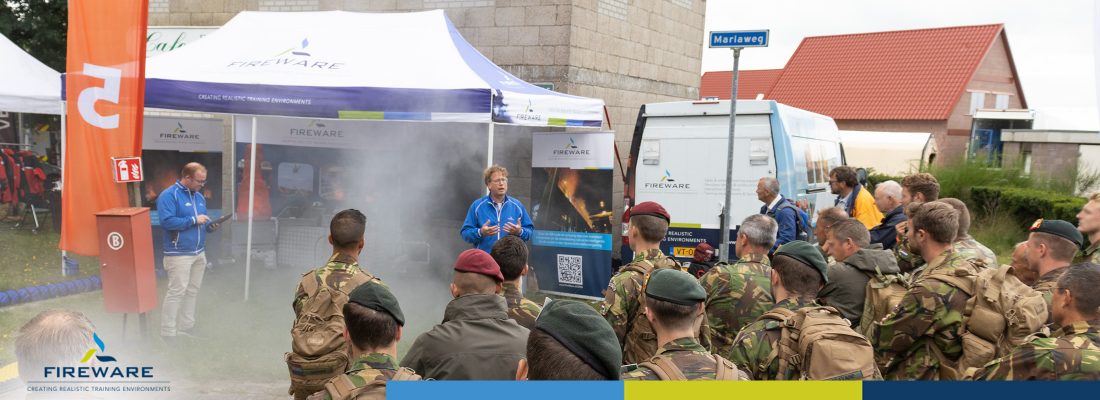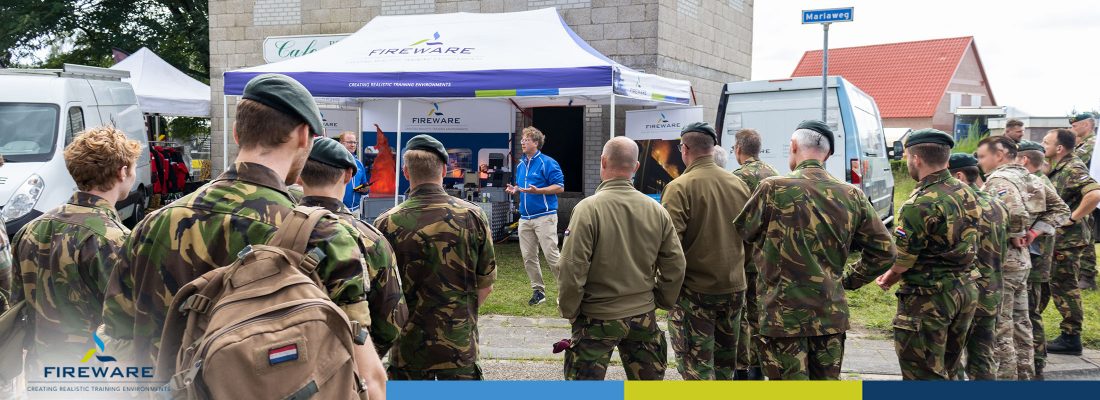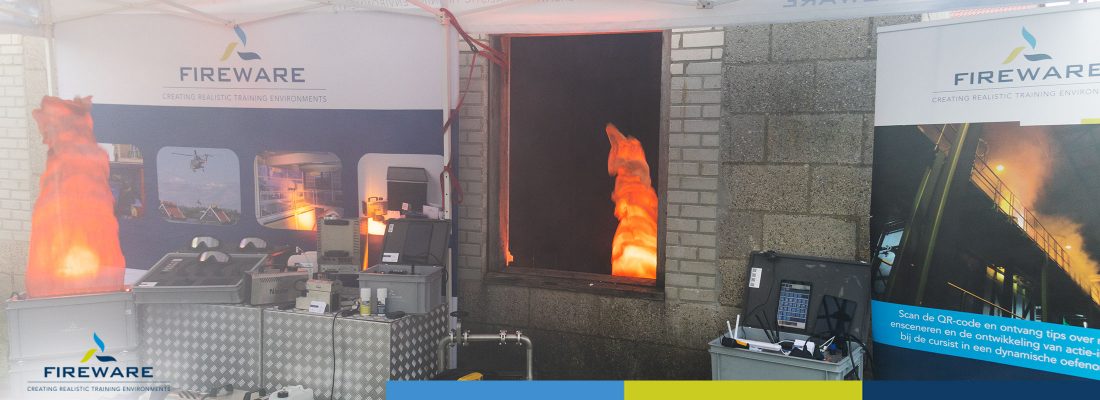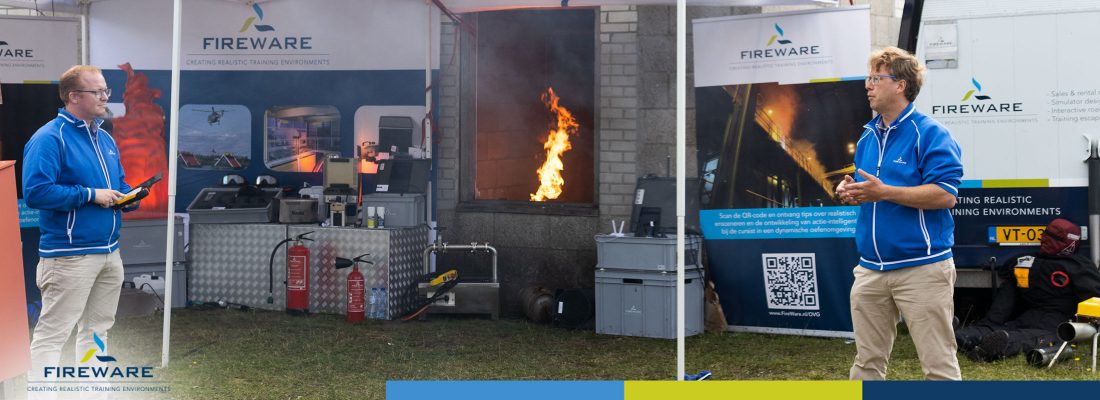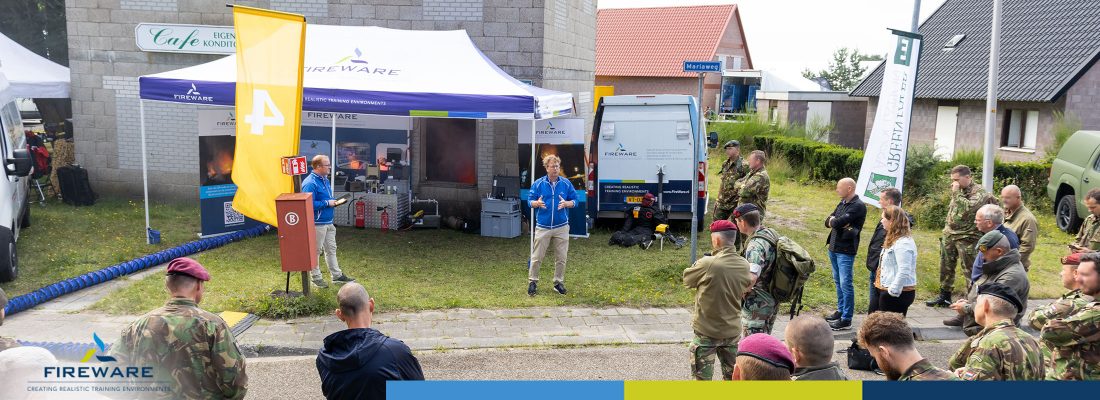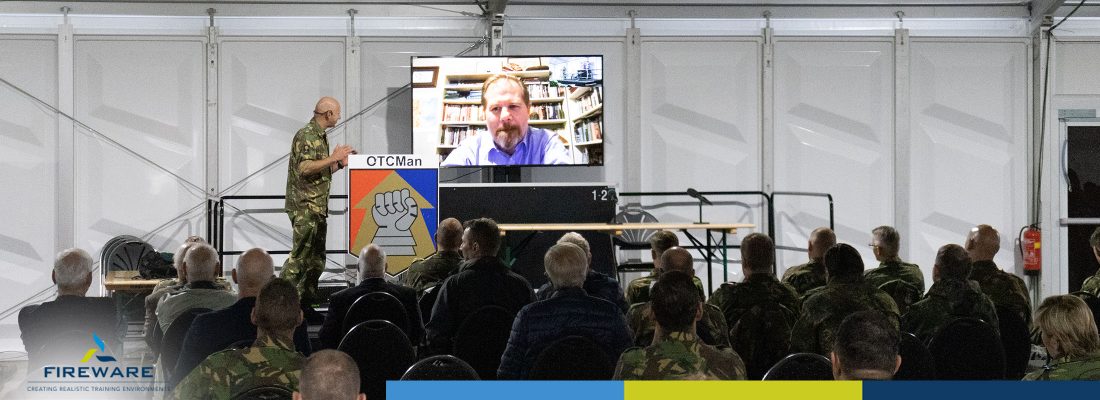During the keynote by Colonel Harm van der Have at the Dutch Urban Operations theme day in Harskamp, it quickly became clear that we face a large number of simulation challenges. Due to the increasing environmental requirements, the range of possibilities for training is diminishing. The requirements for realism and experience are getting higher and higher. How can we create a realistic training environment that develops action intelligence and confronts the trainee with realistic dilemmas?
There are various possibilities for creating a good “live” training environment. We will explain the two most obvious ones in more detail.
Upgrading the current training facilities
Human beings have a number of senses. We can see, smell, feel, hear and taste. Stimulating each sense as realistically as possible creates a realistic training environment. Training materials can help to address these senses.
One of the possibilities for creating a more realistic training environment is to adapt and upgrade the current training facilities. By applying light, sound, smoke, smell and other special effects in a highly realistic setting, a completely different training experience is created. However, the effects applied during an exercise will also have to be operated. The more accessible and simple this is for the instructor, the more attention he can keep on the student.
During these upgrades and adaptations, it is good to consider the topicality of the building. Does it still meet the training needs? Or are there deviations in the intended learning and teaching objectives and the environment? Consider the absence or presence of high-rise buildings and the possibility of providing access in various ways.
The basis of the design of a training environment is the competence matrix. A document that provides a detailed picture of all intended learning and teaching objectives. This competence matrix is compared with the current training environment. Based on that, an adjustment design can be made. FireWare has been at the cradle of a lot of training centres, just take a look at our portfolio of permanent training centres.
Convert existing environments to a training facility
Another option is to temporarily convert an existing (urban) environment into a training facility. For example, when somewhere in the world a residential area is demolished. This offers unique opportunities to create an extremely realistic training environment. The “decor” is already there. By adding effects, an extremely realistic training environment can be imitated, within the applicable environmental requirements.
Temporary training centres can be built for a number of hours, but also for a number of months. The big advantage of the temporary nature is that object saturation can easily be prevented. Object saturation is the phenomenon that a training environment has a high degree of predictability: the trainee already knows exactly what is coming next.
This last form of creating training facilities requires a different approach and a different infrastructure. A lot is possible here! Take a look at our portfolio of simulations and staging to see what is already happening in this field within the fire brigade, police and ambulance services.

